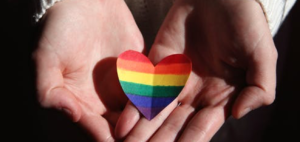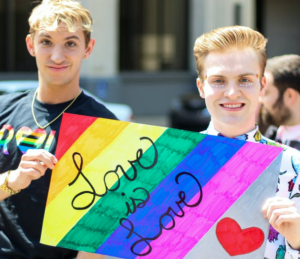With LGBT history month upon us, it is important for us all to take a minute, to stop, and to reflect on how far we have come on the road to equality.
From the Buggery Act 1533 punishing homosexuality with death to the introduction of same-sex marriages in 2013, the road has not been straightforward. There have been various potholes, tsunamis and breakdowns along the way, and we have by no means reached our final destination. Nevertheless, the journey has been made a little easier by the acts of those before us, those who have worked tirelessly to get us where we are now.

1960s- starting the engine:
The 1960s saw a significant change in attitude towards the LGBT community emerging. Committees (such as the North Western Homosexual Law Reform Committee) and Societies (such as the Beaumont Society) were formed for the promotion of social and legal equality, providing better information and awareness on the LGBT community.
The Sexual Offences Act 1967 was also passed; partially legalising sex between two men, if over the age of 21 and it was in private. This demonstrates the beginning of its acceptance.
1970s- the slippery road:
As a result of the Stonewall riots in America, the London Gay Liberation Front (GLF) was formed in the UK to fight for LGBT rights. In 1972, they organised the first ever London Pride event with approximately 2000 attendees. This decade also saw the creation of the Pride flag by Gilbert Baker, an LGBT rights activist, which has been used ever since.
Some obstacles towards equality were also showcased through the case of Corbett v Corbett which held that a person cannot legally change the gender they have been given at birth.
Further, the Nullity of Marriage Act 1971 was passed which banned the possibility of any same-sex marriages in England and Wales.
1980s- pothole after pothole:
Things did not seem to get easier in the eighties as in the midst of the HIV and AIDS crisis, men who had sex with other men were banned from donating blood in the fear of HIV spreading. This has only been relaxed recently to allow men to donate if they abstain from sex for three months prior to donation. In summer 2021, this is due to change again, finally allowing gay men to donate blood at any time.
The second retreat from equality can be seen with Margret Thatcher’s introduction of section 28 of the Local Government Act. The Act noted that local authorities were prohibited from intentionally promoting ‘homosexuality or publishing material with the intention of promoting homosexuality’ or promoting ‘the teaching in any maintained school of the acceptability of homosexuality as a pretended family relationship’ sending out a strong message of inequality within society.
1990s- maintaining a steady speed:
After the pitfalls in the last decade, hope was restored in the nineties when the World Health Organisation declassified homosexuality as a mental illness and the consent for same-sex relations was lowered from 21 to 18 years old. The case of P v S and Cornwall County Council also offered a boost after the court held that discrimination of those about to undergo gender reassignment is prohibited.
2000s- changing gears:
The start of the millennium saw positive strides for LGBT rights beginning with the lift on the ban which prohibited individuals from the LGBT community serving in the army. The age of consent was lowered again to 16 to match heterosexuals.
The Adoption and Children Act 2002 allowed same-sex couples to apply for adoption. And in 2003, section 28 of the Local Government Act was also finally repealed.
2004 was perhaps one of the most memorable year of legal progress so far with the introduction of the Civil Partnership Act (allowing same-sex couples to enter a legally binding partnership) and the Gender Recognition Act (allowing people to change their legal gender).

Notwithstanding the legal progress made in this year, inequality still loomed as marriage was still seen by society as a special institution which was only available to heterosexual couples.
2010s- signs for final destination in sight:
The first major development of this decade started with the Equality Act 2010 providing protection from discrimination for LGBT employees. Also, the first ever Trans Pride was held in Brighton with approximately 450 attendees.
Same-sex marriages were also legalised in 2013 to allow same-sex couples access to what society sees as a special institution.
More recently, in 2019 the World Health Organisation has declassified transgender health issues as a mental illness and on the 11th February 2020, the first same-sex marriage in Northern Ireland took place showcasing the progress we have made from 1533.
Despite these events showcasing our progress as a society, we still have many more miles to travel. Currently, the law does not accept the existence of non-binary people.
Also, although the law provides for individuals to have their gender changed (under the Gender Recognition Act 2004), those eligible must go through expensive, lengthy, intrusive, medicalised and demeaning process simply to update their personal record.
In relation to same-sex marriages, the law still does not allow for annulment for non-consummation nor adultery as a means for divorce (which are available to heterosexual couples).
Of course, it is important to look back at the miles of progress society has made; however, we are yet to reach our final destination.

Sources:
Amnesty International– LGBTI RIGHTS.
A short history of LGBT rights in the UK, by Steven Dryden.
Why the next UK government must protect and progress LGBT rights.Stonewall, November 2019 by Josh Bradlow.
The UK History of LGBTQ+: A Timeline of Important Events, by Liz Burton March 6, 2020.
Key dates for lesbian, gay, bi and trans equality.
By Aman
